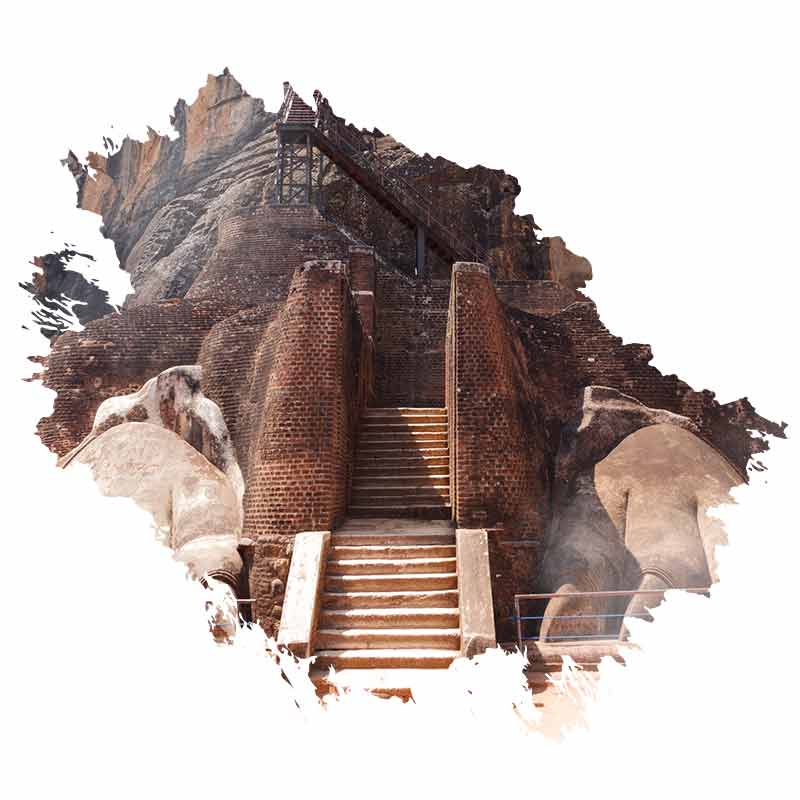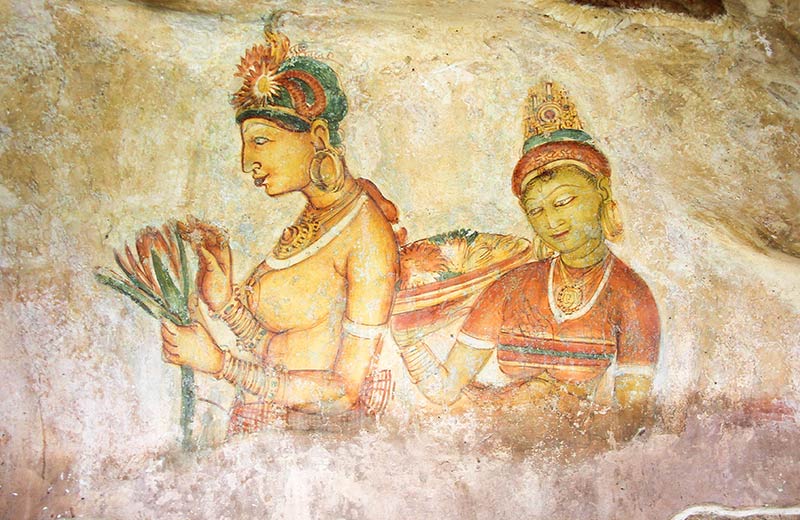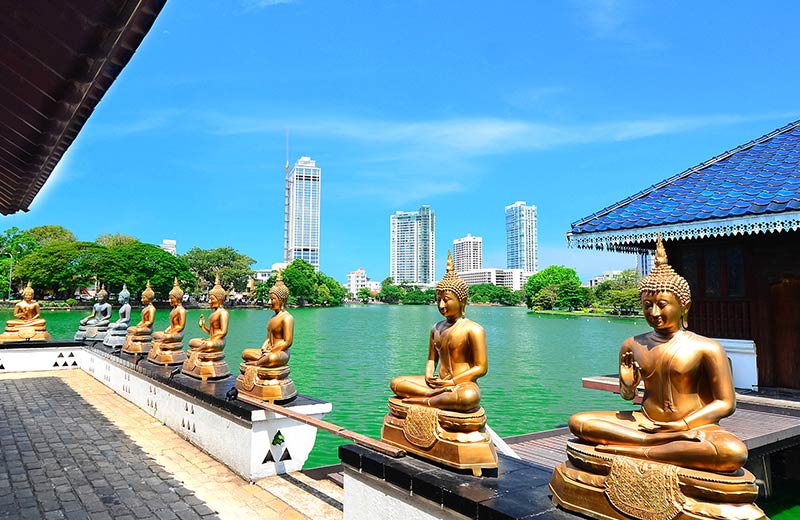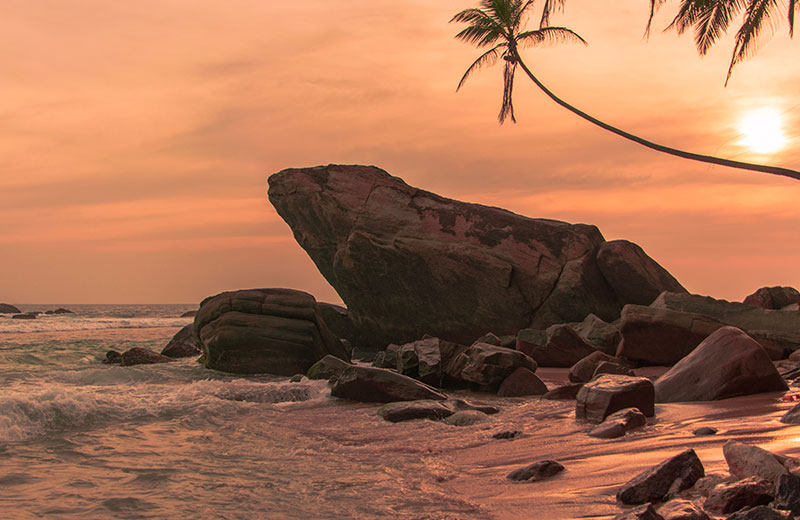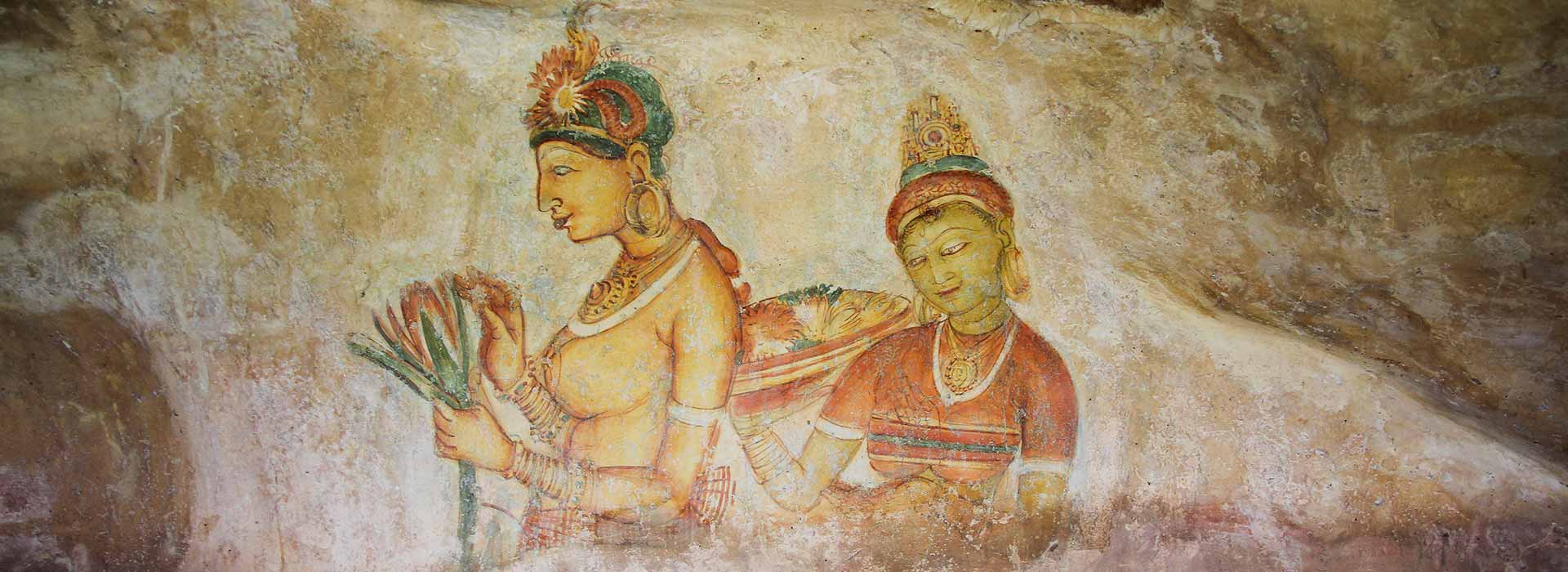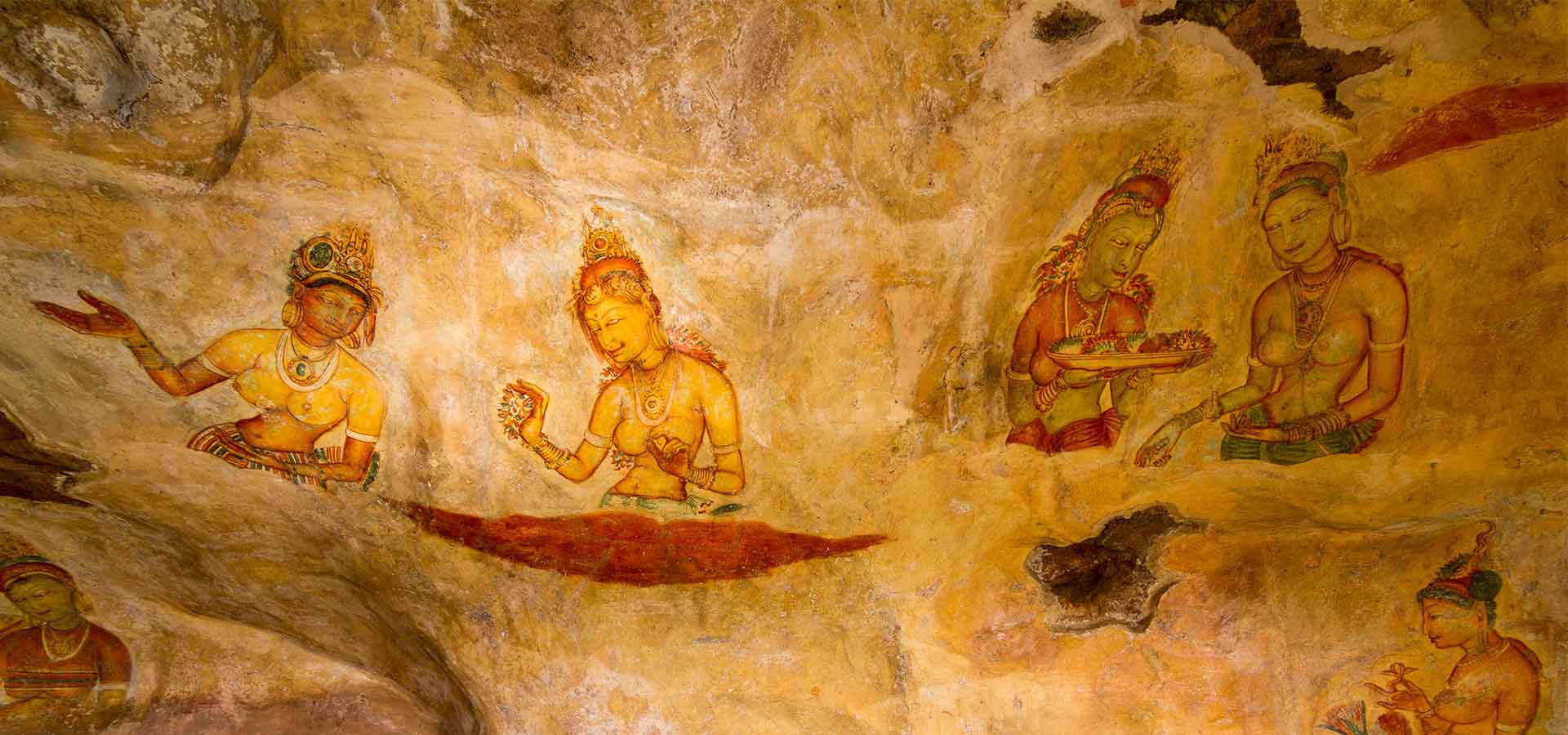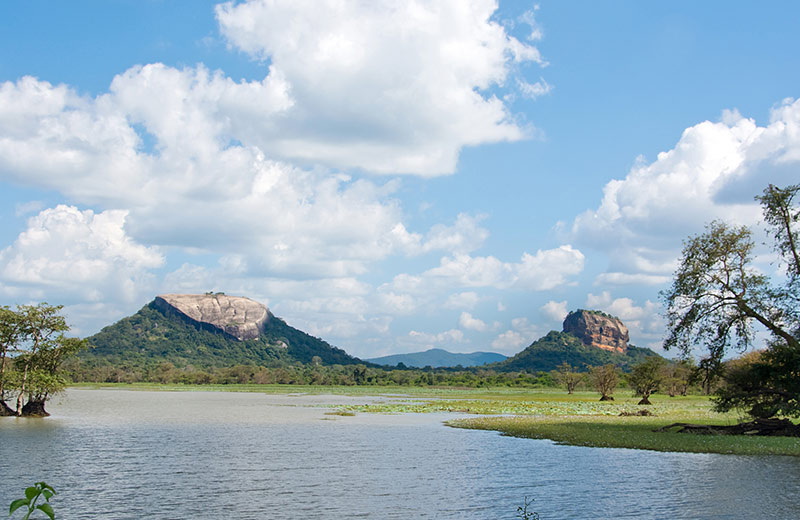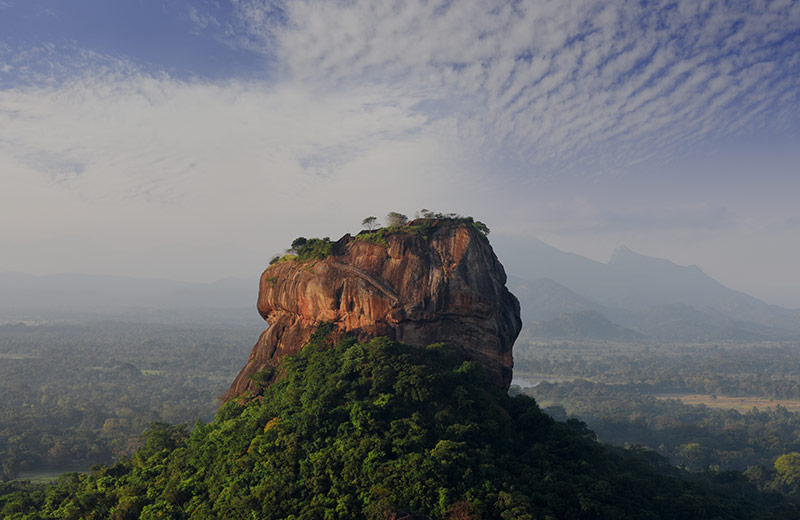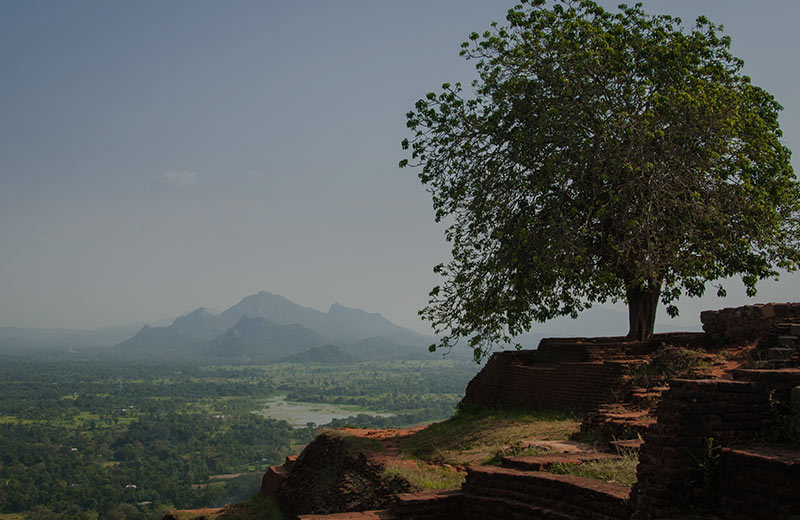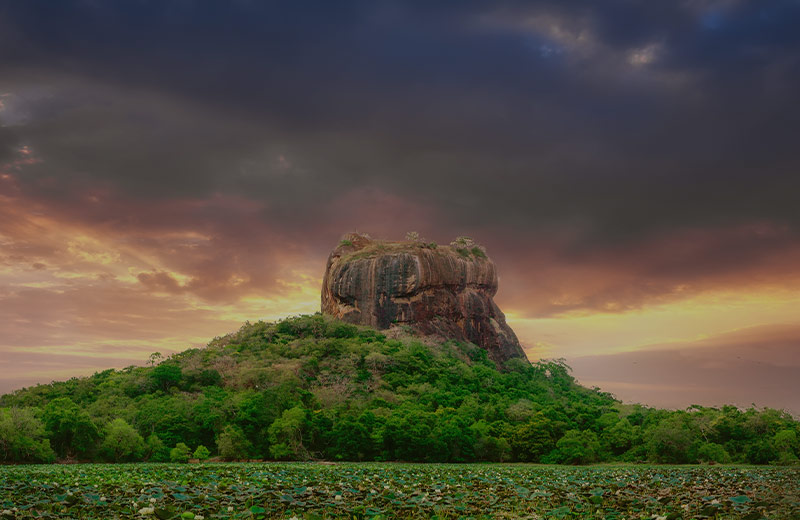The Art,Sculpture and Poetry of Sigiriya
King Kashyapa reigned with an iron fist during the 5 th Century AD, and it certainly shows in the artistic creations that adorn the walls of Sigiriya. It is believed that the king wanted Sigiriya to emulate the fabled Alakamanda, the city of gods, a feat the ancient craftsmen possibly achieved, based on the remains we can see today.
The Sigiri Frescoes
The walls of Sigiriya are believed to have originally been plastered and painted white to convey the idea of purity, similar to the manner in which the city of gods was depicted in the ancient world. But Kashyapa was more intent on creating a magnificent spectacle that would stand out and capture the attention of anyone who visited the citadel.
The king possessed a harem of more than 500 concubines, who were admired for their sensuous and exotic beauty. Therefore, it is widely believed that they were the inspiration for the golden skinned, bare breasted women that make up the ‘Sigiri Frescoes’. The intricate and lavish gem studded jewellery that adorns the women in these paintings also suggest that they may have been members of the royal family, namely Kashyapa’s daughters. There is also a belief that the paintings depict apsaras, or goddesses, that are emerging from the heavens to bless the citadel. This is corroborated by similar depictions in the Ajanta Caves of the Gupta period in Maharashtra, India. Some historians even believe that the drawings are really depictions of celestial nymphs who are believed to have been protectors of the Rock Fortress. What we see now is just part of what was supposed to be one of the oldest and most intricate picture galleries in the ancient world.
